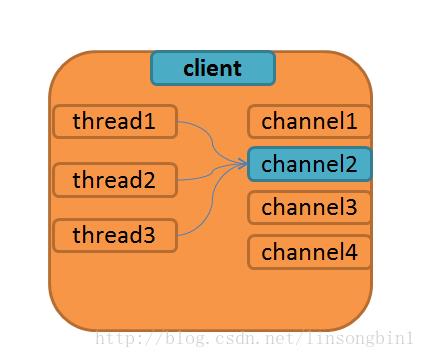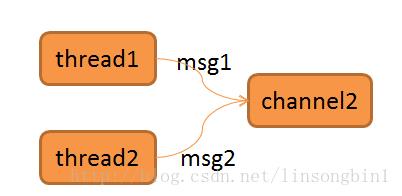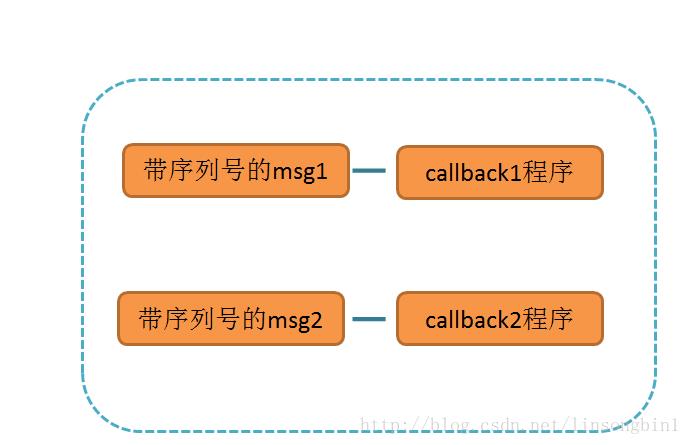netty 实战 – netty client 连接池设计
Posted ImportNew
tags:
篇首语:本文由小常识网(cha138.com)小编为大家整理,主要介绍了netty 实战 – netty client 连接池设计相关的知识,希望对你有一定的参考价值。
来源:Sam哥哥,
blog.csdn.net/linsongbin1/article/details/77990882
概述
最近有很多网友在咨询netty client中,netty的channel连接池应该如何设计。这是个稍微有些复杂的主题,牵扯到蛮多技术点,要想在网上找到相关的又相对完整的参考文章,确实不太容易。
在本篇文章中,会给出其中一种解决方案,并且附带完整的可运行的代码。如果网友有更好的方案,可以回复本文,我们一起讨论讨论,一起开阔思路和眼界。
阅读本文之前需要具备一些基础知识
1、知道netty的一些基础知识,比如ByteBuf类的相关api;
2、知道netty的执行流程;
3、 必须阅读过我之前写的netty实战-自定义解码器处理半包消息,因为本文部分代码来自这篇文章。
现在微服务非常的热门,也有很多公司在用。微服务框架中,如果是使用thrift、grpc来作为数据序列化框架的话,通常都会生成一个SDK给客户端用户使用。客户端只要使用这个SDK,就可以方便的调用服务端的微服务接口。本文讨论的就是使用SDK的netty客户端,它的netty channel连接池的设计方案。至于netty http client的channel连接池设计,基于http的,是另外一个主题了,需要另外写文章来讨论的。
netty channel连接池设计
DB连接池中,当某个线程获取到一个db connection后,在读取数据或者写数据时,如果线程没有操作完,这个db connection一直被该线程独占着,直到线程执行完任务。如果netty client的channel连接池设计也是使用这种独占的方式的话,有几个问题。
1、netty中channel的writeAndFlush方法,调用完后是不用等待返回结果的,writeAndFlush一被调用,马上返回。对于这种情况,是完全没必要让线程独占一个channel的。
2、使用类似DB pool的方式,从池子里拿连接,用完后返回,这里的一进一出,需要考虑并发锁的问题。另外,如果请求量很大的时候,连接会不够用,其他线程也只能等待其他线程释放连接。
因此不太建议使用上面的方式来设计netty channel连接池,channel独占的代价太大了。可以使用Channel数组的形式, 复用netty的channel。当线程要需要Channel的时候,随机从数组选中一个Channel,如果Channel还未建立,则创建一个。如果线程选中的Channel已经建立了,则复用这个Channel。
假设channel数组的长度为4
private Channel[] channels = new Channel[4];
当外部系统请求client的时候,client从channels数组中随机挑选一个channel,如果该channel尚未建立,则触发建立channel的逻辑。无论有多少请求,都是复用这4个channel。假设有10个线程,那么部分线程可能会使用相同的channel来发送数据和接收数据。因为是随机选择一个channel的,多个线程命中同一个channel的机率还是很大的。如下图

10个线程中,可能有3个线程都是使用channel2来发送数据的。这个会引入另外一个问题。thread1通过channel2发送一条消息msg1到服务端,thread2也通过channel2发送一条消息msg2到服务端,当服务端处理完数据,通过channel2返回数据给客户端的时候,如何区分哪条消息是哪个线程的呢?如果不做区分,万一thread1拿到的结果其实是thread2要的结果,怎么办?
那么如何做到让thread1和thread2拿到它们自己想要的结果呢?
之前我在netty实战-自定义解码器处理半包消息一文中提到,自定义消息的时候,通常会在消息中加入一个序列号,用来唯一标识消息的。当thread1发送消息时,往消息中插入一个唯一的消息序列号,同时为thread1建立一个callback回调程序,当服务端返回消息的时候,根据消息中的序列号从对应的callback程序获取结果。这样就可以解决上面说到的问题。
消息格式

消息、消息seq以及callback对应关系


OK,下面就基于上面的设计来进行编码。
代码
先来实现netty客户端,设置10个线程并发获取channel,为了达到真正的并发,利用CountDownLatch来做开关,同时channel连接池设置4个channel。
package nettyinaction.nettyclient.channelpool.client;
import io.netty.buffer.ByteBuf;
import io.netty.buffer.UnpooledByteBufAllocator;
import io.netty.channel.Channel;
import nettyinaction.nettyclient.channelpool.ChannelUtils;
import nettyinaction.nettyclient.channelpool.IntegerFactory;
import java.util.HashMap;
import java.util.Map;
import java.util.concurrent.CountDownLatch;
public class SocketClient {
public static void main(String[] args) throws InterruptedException {
//当所有线程都准备后,开闸,让所有线程并发的去获取netty的channel
final CountDownLatch countDownLatchBegin = new CountDownLatch(1);
//当所有线程都执行完任务后,释放主线程,让主线程继续执行下去
final CountDownLatch countDownLatchEnd = new CountDownLatch(10);
//netty channel池
final NettyChannelPool nettyChannelPool = new NettyChannelPool();
final Map<String, String> resultsMap = new HashMap<>();
//使用10个线程,并发的去获取netty channel
for (int i = 0; i < 10; i++) {
new Thread(new Runnable() {
@Override
public void run() {
try {
//先让线程block住
countDownLatchBegin.await();
Channel channel = null;
try {
channel = nettyChannelPool.syncGetChannel();
} catch (InterruptedException e) {
e.printStackTrace();
}
//为每个线程建立一个callback,当消息返回的时候,在callback中获取结果
CallbackService callbackService = new CallbackService();
//给消息分配一个唯一的消息序列号
int seq = IntegerFactory.getInstance().incrementAndGet();
//利用Channel的attr方法,建立消息与callback的对应关系
ChannelUtils.putCallback2DataMap(channel,seq,callbackService);
synchronized (callbackService) {
UnpooledByteBufAllocator allocator = new UnpooledByteBufAllocator(false);
ByteBuf buffer = allocator.buffer(20);
buffer.writeInt(ChannelUtils.MESSAGE_LENGTH);
buffer.writeInt(seq);
String threadName = Thread.currentThread().getName();
buffer.writeBytes(threadName.getBytes());
buffer.writeBytes("body".getBytes());
//给netty 服务端发送消息,异步的,该方法会立刻返回
channel.writeAndFlush(buffer);
//等待返回结果
callbackService.wait();
//解析结果,这个result在callback中已经解析到了。
ByteBuf result = callbackService.result;
int length = result.readInt();
int seqFromServer = result.readInt();
byte[] head = new byte[8];
result.readBytes(head);
String headString = new String(head);
byte[] body = new byte[4];
result.readBytes(body);
String bodyString = new String(body);
resultsMap.put(threadName, seqFromServer + headString + bodyString);
}
} catch (Exception e) {
e.printStackTrace();
}
finally {
countDownLatchEnd.countDown();
}
}
}).start();
}
//开闸,让10个线程并发获取netty channel
countDownLatchBegin.countDown();
//等10个线程执行完后,打印最终结果
countDownLatchEnd.await();
System.out.println("resultMap="+resultsMap);
}
public static class CallbackService{
public volatile ByteBuf result;
public void receiveMessage(ByteBuf receiveBuf) throws Exception {
synchronized (this) {
result = receiveBuf;
this.notify();
}
}
}
}
其中IntegerFactory类用于生成消息的唯一序列号
package nettyinaction.nettyclient.channelpool;
import java.util.concurrent.atomic.AtomicInteger;
public class IntegerFactory {
private static class SingletonHolder {
private static final AtomicInteger INSTANCE = new AtomicInteger();
}
private IntegerFactory(){}
public static final AtomicInteger getInstance() {
return SingletonHolder.INSTANCE;
}
}
而ChannelUtils类则用于建立channel、消息序列号和callback程序的对应关系。
package nettyinaction.nettyclient.channelpool;
import io.netty.channel.Channel;
import io.netty.util.AttributeKey;
import java.util.Map;
public class ChannelUtils {
public static final int MESSAGE_LENGTH = 16;
public static final AttributeKey<Map<Integer, Object>> DATA_MAP_ATTRIBUTEKEY = AttributeKey.valueOf("dataMap");
public static <T> void putCallback2DataMap(Channel channel, int seq, T callback) {
channel.attr(DATA_MAP_ATTRIBUTEKEY).get().put(seq, callback);
}
public static <T> T removeCallback(Channel channel, int seq) {
return (T) channel.attr(DATA_MAP_ATTRIBUTEKEY).get().remove(seq);
}
}
NettyChannelPool则负责创建netty的channel。
package nettyinaction.nettyclient.channelpool.client;
import io.netty.bootstrap.Bootstrap;
import io.netty.channel.*;
import io.netty.channel.nio.NioEventLoopGroup;
import io.netty.channel.socket.SocketChannel;
import io.netty.channel.socket.nio.NiosocketChannel;
import io.netty.handler.logging.LogLevel;
import io.netty.handler.logging.LoggingHandler;
import io.netty.util.Attribute;
import nettyinaction.nettyclient.channelpool.ChannelUtils;
import nettyinaction.nettyclient.channelpool.SelfDefineEncodeHandler;
import java.util.Map;
import java.util.Random;
import java.util.concurrent.ConcurrentHashMap;
public class NettyChannelPool {
private Channel[] channels;
private Object [] locks;
private static final int MAX_CHANNEL_COUNT = 4;
public NettyChannelPool() {
this.channels = new Channel[MAX_CHANNEL_COUNT];
this.locks = new Object[MAX_CHANNEL_COUNT];
for (int i = 0; i < MAX_CHANNEL_COUNT; i++) {
this.locks[i] = new Object();
}
}
/**
* 同步获取netty channel
*/
public Channel syncGetChannel() throws InterruptedException {
//产生一个随机数,随机的从数组中获取channel
int index = new Random().nextInt(MAX_CHANNEL_COUNT);
Channel channel = channels[index];
//如果能获取到,直接返回
if (channel != null && channel.isActive()) {
return channel;
}
synchronized (locks[index]) {
channel = channels[index];
//这里必须再次做判断,当锁被释放后,之前等待的线程已经可以直接拿到结果了。
if (channel != null && channel.isActive()) {
return channel;
}
//开始跟服务端交互,获取channel
channel = connectToServer();
channels[index] = channel;
}
return channel;
}
private Channel connectToServer() throws InterruptedException {
EventLoopGroup eventLoopGroup = new NioEventLoopGroup();
Bootstrap bootstrap = new Bootstrap();
bootstrap.group(eventLoopGroup)
.channel(NioSocketChannel.class)
.option(ChannelOption.SO_KEEPALIVE, Boolean.TRUE)
.option(ChannelOption.TCP_NODELAY, Boolean.TRUE)
.handler(new LoggingHandler(LogLevel.INFO))
.handler(new ChannelInitializer<SocketChannel>() {
@Override
protected void initChannel(SocketChannel ch) throws Exception {
ChannelPipeline pipeline = ch.pipeline();
pipeline.addLast(new SelfDefineEncodeHandler());
pipeline.addLast(new SocketClientHandler());
}
});
ChannelFuture channelFuture = bootstrap.connect("localhost", 8899);
Channel channel = channelFuture.sync().channel();
//为刚刚创建的channel,初始化channel属性
Attribute<Map<Integer,Object>> attribute = channel.attr(ChannelUtils.DATA_MAP_ATTRIBUTEKEY);
ConcurrentHashMap<Integer, Object> dataMap = new ConcurrentHashMap<>();
attribute.set(dataMap);
return channel;
}
}
先使用构造方法,初始化channels数组,长度为4。NettyChannelPool类有两个关键的地方。
第一个是获取channel的时候必须加上锁。另外一个是当获取到channel后,利用channel的属性,创建一个Map,后面需要利用这个Map建立消息序列号和callback程序的对应关系。
//初始化channel属性
Attribute<Map<Integer,Object>> attribute = channel.attr(ChannelUtils.DATA_MAP_ATTRIBUTEKEY);
ConcurrentHashMap<Integer, Object> dataMap = new ConcurrentHashMap<>();
attribute.set(dataMap);
这个map就是我们上面看到的
Map的put的动作,就是在SocketClient类中的
ChannelUtils.putCallback2DataMap(channel,seq,callbackService);
执行的。客户端处理消息还需要两个hanlder辅助,一个是处理半包问题,一个是接收服务端的返回的消息。
SelfDefineEncodeHandler类用于处理半包消息
package nettyinaction.nettyclient.channelpool;
import io.netty.buffer.ByteBuf;
import io.netty.channel.ChannelHandlerContext;
import io.netty.handler.codec.ByteToMessageDecoder;
import java.util.List;
public class SelfDefineEncodeHandler extends ByteToMessageDecoder {
@Override
protected void decode(ChannelHandlerContext ctx, ByteBuf bufferIn, List<Object> out) throws Exception {
if (bufferIn.readableBytes() < 4) {
return;
}
int beginIndex = bufferIn.readerIndex();
int length = bufferIn.readInt();
if (bufferIn.readableBytes() < length) {
bufferIn.readerIndex(beginIndex);
return;
}
bufferIn.readerIndex(beginIndex + 4 + length);
ByteBuf otherByteBufRef = bufferIn.slice(beginIndex, 4 + length);
otherByteBufRef.retain();
out.add(otherByteBufRef);
}
}
SocketClientHandler类用于接收服务端返回的消息,并且根据消息序列号获取对应的callback程序。
package nettyinaction.nettyclient.channelpool.client;
import io.netty.buffer.ByteBuf;
import io.netty.channel.Channel;
import io.netty.channel.ChannelHandlerContext;
import io.netty.channel.ChannelInboundHandlerAdapter;
import nettyinaction.nettyclient.channelpool.ChannelUtils;
public class SocketClientHandler extends ChannelInboundHandlerAdapter {
@Override
public void channelRead(ChannelHandlerContext ctx, Object msg) throws Exception {
Channel channel = ctx.channel();
ByteBuf responseBuf = (ByteBuf)msg;
responseBuf.markReaderIndex();
int length = responseBuf.readInt();
int seq = responseBuf.readInt();
responseBuf.resetReaderIndex();
//获取消息对应的callback
SocketClient.CallbackService callbackService = ChannelUtils.<SocketClient.CallbackService>removeCallback(channel, seq);
callbackService.receiveMessage(responseBuf);
}
}
到此客户端程序编写完毕。至于服务端的代码,则比较简单,这里直接贴上代码。
package nettyinaction.nettyclient.channelpool.server;
import io.netty.bootstrap.ServerBootstrap;
import io.netty.channel.ChannelFuture;
import io.netty.channel.ChannelInitializer;
import io.netty.channel.ChannelPipeline;
import io.netty.channel.EventLoopGroup;
import io.netty.channel.nio.NioEventLoopGroup;
import io.netty.channel.socket.SocketChannel;
import io.netty.channel.socket.nio.NioServerSocketChannel;
import io.netty.handler.logging.LogLevel;
import io.netty.handler.logging.LoggingHandler;
import nettyinaction.nettyclient.channelpool.SelfDefineEncodeHandler;
public class SocketServer {
public static void main(String[] args) throws InterruptedException {
EventLoopGroup parentGroup = new NioEventLoopGroup();
EventLoopGroup childGroup = new NioEventLoopGroup();
try {
ServerBootstrap serverBootstrap = new ServerBootstrap();
serverBootstrap.group(parentGroup, childGroup)
.channel(NioServerSocketChannel.class)
.handler(new LoggingHandler(LogLevel.INFO))
.childHandler(new ChannelInitializer<SocketChannel>() {
@Override
protected void initChannel(SocketChannel ch) throws Exception {
ChannelPipeline pipeline = ch.pipeline();
pipeline.addLast(new SelfDefineEncodeHandler());
pipeline.addLast(new BusinessServerHandler());
}
});
ChannelFuture channelFuture = serverBootstrap.bind(8899).sync();
channelFuture.channel().closeFuture().sync();
}
finally {
parentGroup.shutdownGracefully();
childGroup.shutdownGracefully();
}
}
}
package nettyinaction.nettyclient.channelpool.server;
import io.netty.buffer.ByteBuf;
import io.netty.buffer.UnpooledByteBufAllocator;
import io.netty.channel.Channel;
import io.netty.channel.ChannelHandlerContext;
import io.netty.channel.ChannelInboundHandlerAdapter;
import nettyinaction.nettyclient.channelpool.ChannelUtils;
public class BusinessServerHandler extends ChannelInboundHandlerAdapter {
@Override
public void channelRead(ChannelHandlerContext ctx, Object msg) throws Exception {
Channel channel = ctx.channel();
ByteBuf buf = (ByteBuf)msg;
//1、读取消息长度
int length = buf.readInt();
//2、读取消息序列号
int seq = buf.readInt();
//3、读取消息头部
byte[] head = new byte[8];
buf.readBytes(head);
String headString = new String(head);
//4、读取消息体
byte[] body = new byte[4];
buf.readBytes(body);
String bodyString = new String(body);
//5、新建立一个缓存区,写入内容,返回给客户端
UnpooledByteBufAllocator allocator = new UnpooledByteBufAllocator(false);
ByteBuf responseBuf = allocator.buffer(20);
responseBuf.writeInt(ChannelUtils.MESSAGE_LENGTH);
responseBuf.writeInt(seq);
responseBuf.writeBytes(headString.getBytes());
responseBuf.writeBytes(bodyString.getBytes());
//6、将数据写回到客户端
channel.writeAndFlush(responseBuf);
}
}
运行服务端代码和客户端代码,期望的结果是
10个线程发送消息后,能从服务端获取到正确的对应的返回信息,这些信息不会发生错乱,各个线程都能拿到自己想要的结果,不会发生错读的情况。
运行后的结果如下
Thread-3=9Thread-3body,
Thread-4=8Thread-4body,
Thread-5=5Thread-5body,
Thread-6=1Thread-6body,
Thread-7=3Thread-7body,
Thread-8=10Thread-8body,
Thread-9=4Thread-9body,
Thread-0=7Thread-0body,
Thread-1=6Thread-1body,
Thread-2=2Thread-2body
通过观察结果,可以知道10个线程并发获取channel后,部分线程共享一个channel,但是10个线程能仍然能正确获取到结果。
代码细节解析
1、等待服务端的返回
由于 channel.writeAndFlush是异步的,必须有一种机制来让线程等待服务端返回结果。这里采用最原始的wait和notify方法。当writeAndFlush调用后,立刻让当前线程wait住,放置在callbackservice对象的等待列表中,当服务器端返回消息时,客户端的SocketClientHandler类中的channelRead方法会被执行,解析完数据后,从channel的attr属性中获取DATA_MAP_ATTRIBUTEKEY 这个key对应的map。并根据解析出来的seq从map中获取事先放置好的callbackservice对象,执行它的receiveMessage方法。将receiveBuf这个存放结果的缓存区对象赋值到callbackservice的result属性中。并调用callbackservice对象的notify方法,唤醒wait在callbackservice对象的线程,让其继续往下执行。
2、产生消息序列号
int seq = IntegerFactory.getInstance().incrementAndGet();
为了演示的方便,这里是产生单服务器全局唯一的序列号。如果请求量大的话,就算是AtomicInteger是CAS操作,也会产生很多的竞争。建议产生channel级别的唯一序列号,降低竞争。只要保证在一个channel内的消息的序列号是不重复的即可。
至于其他的一些代码细节,读者可以自己再细看。
看完本文有收获?请转发分享给更多人
关注「ImportNew」,看技术干货
以上是关于netty 实战 – netty client 连接池设计的主要内容,如果未能解决你的问题,请参考以下文章